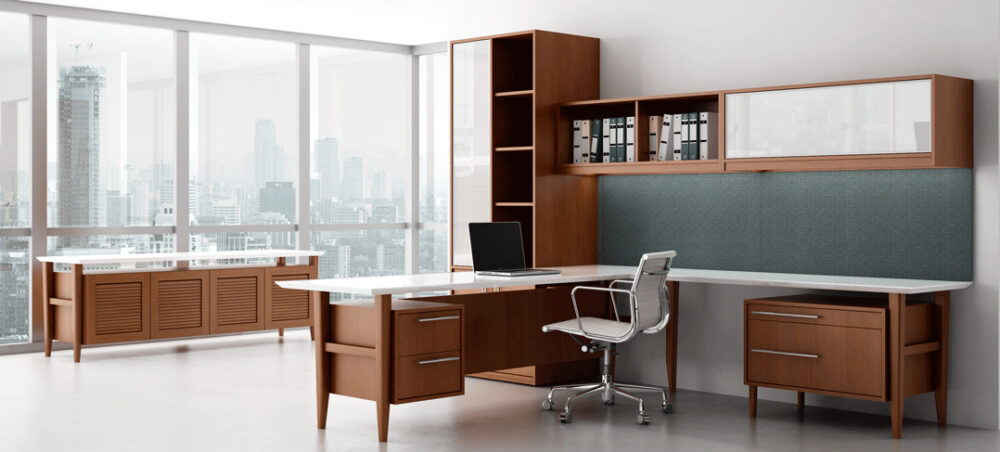
In the ever-evolving corporate world, the modern office has become more than just a place to work. It’s a space that fosters creativity, productivity, and well-being. The right office furniture plays a pivotal role in this transformation. This comprehensive guide explores the various aspects of modern office furniture, emphasizing its importance in creating an efficient and aesthetically pleasing workspace.
The Evolution of Office Furniture
Modern office furniture has undergone significant changes over the past few decades. Traditional heavy wooden desks and chairs have given way to sleek, ergonomic designs that prioritize functionality and comfort. This evolution reflects the shifting work culture and the increasing awareness of employee well-being.
Key Features of Modern Office Furniture
-
Ergonomics: One of the most critical aspects of modern office furniture is its ergonomic design. Ergonomic chairs and desks are designed to support the natural posture of the body, reducing strain and the risk of musculoskeletal disorders.
-
Flexibility and Adjustability: Modern office furniture is highly adaptable. Adjustable desks, often referred to as sit-stand desks, allow employees to alternate between sitting and standing positions, promoting better health and productivity.
-
Aesthetic Appeal: The visual aspect of office furniture cannot be overlooked. Sleek, minimalist designs with clean lines and neutral colors create a professional and inviting atmosphere. The use of sustainable materials adds to the aesthetic appeal while also being environmentally friendly.
Types of Modern Office Furniture
Ergonomic Chairs
Ergonomic chairs are designed to provide optimal support for the back, neck, and arms. Features such as adjustable seat height, lumbar support, and breathable mesh backs ensure comfort during long working hours. Popular models include the Herman Miller Aeron and the Steelcase Leap.
Sit-Stand Desks
Sit-stand desks are a staple in modern offices. These desks allow users to switch between sitting and standing positions, reducing the risk of health issues associated with prolonged sitting. Brands like Varidesk and Uplift Desk offer a range of customizable options.
Collaborative Furniture
Modern offices often emphasize collaboration. Furniture such as modular seating arrangements, breakout tables, and mobile whiteboards facilitate teamwork and idea sharing. These pieces are designed to be easily movable and adaptable to different group sizes and purposes.
Benefits of Modern Office Furniture
Enhanced Productivity
Ergonomically designed furniture reduces physical strain, leading to increased comfort and productivity. Employees are less likely to experience fatigue and discomfort, allowing them to focus better on their tasks.
Improved Employee Well-Being
Modern office furniture promotes better posture and reduces the risk of work-related injuries. Adjustable desks and chairs allow employees to customize their workspaces to their specific needs, enhancing overall well-being.
Attractive Work Environment
A well-furnished office creates a positive impression on clients and visitors. It also boosts employee morale and satisfaction, contributing to a more dynamic and motivated workforce.
Choosing the Right Modern Office Furniture
Assessing Your Needs
Before purchasing office furniture, it’s essential to assess the specific needs of your workspace. Consider factors such as the number of employees, the nature of their work, and the available office space.
Budget Considerations
While quality should not be compromised, it’s important to set a realistic budget. Compare different brands and models, taking into account the long-term benefits of ergonomic and durable furniture.
Future-Proofing
Choose furniture that can adapt to future changes in the workplace. Modular furniture and pieces with adjustable features are ideal for accommodating growth and evolving work styles.
Conclusion
Modern office furniture is a critical investment that goes beyond aesthetics. It plays a fundamental role in enhancing productivity, well-being, and the overall work environment. By choosing ergonomic, flexible, and aesthetically pleasing furniture, companies can create a workspace that not only meets current needs but also adapts to future challenges.








